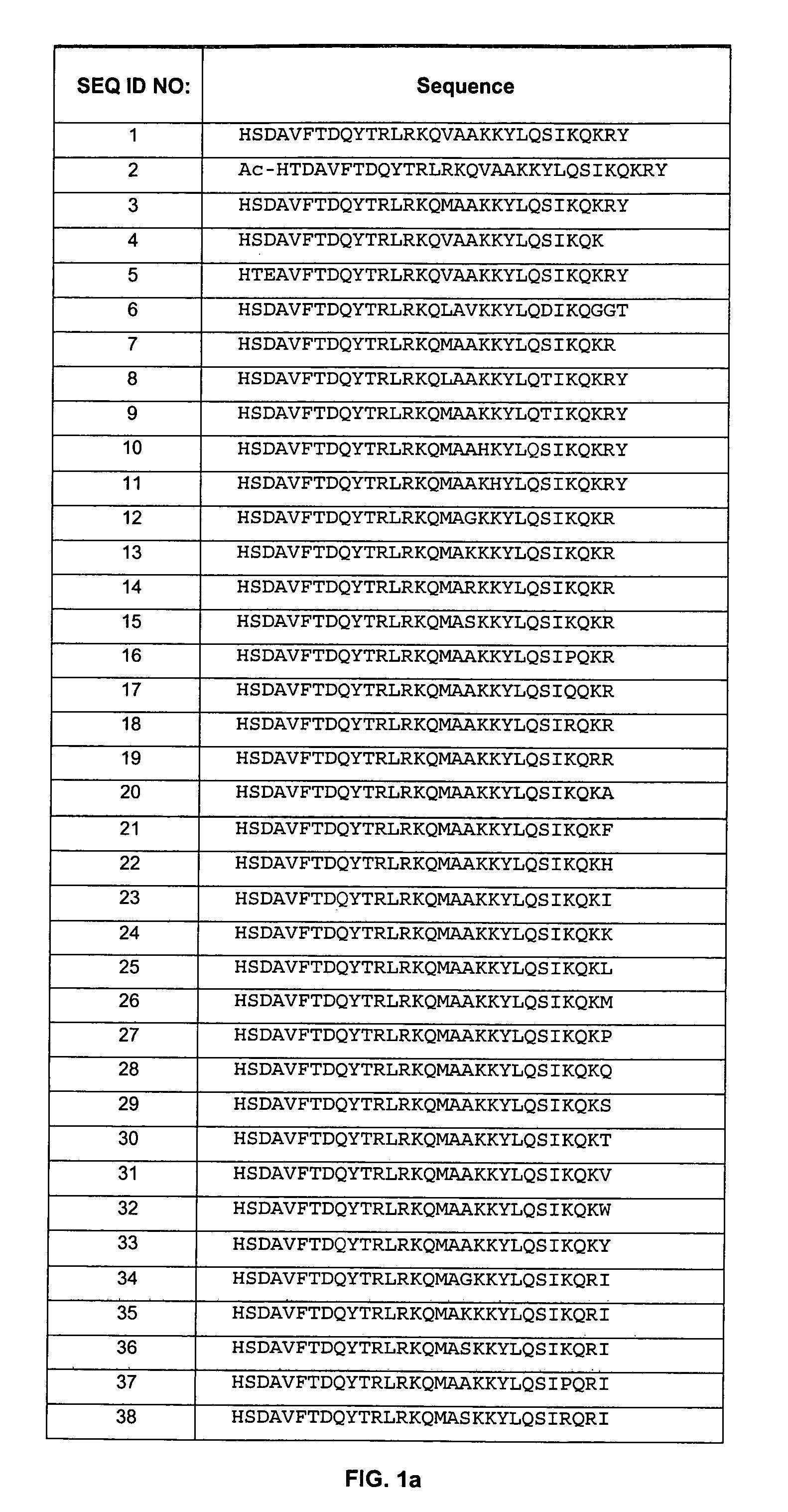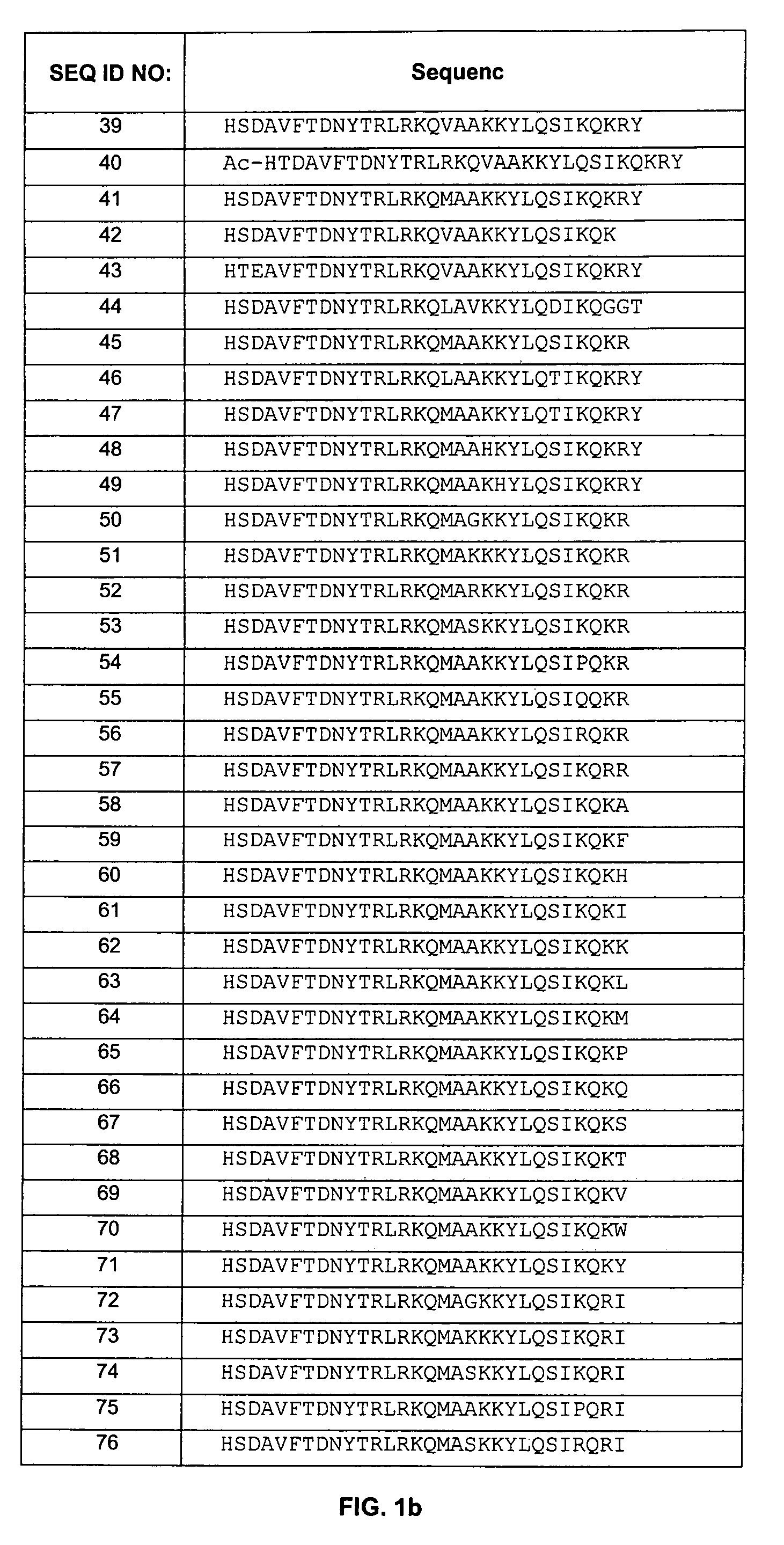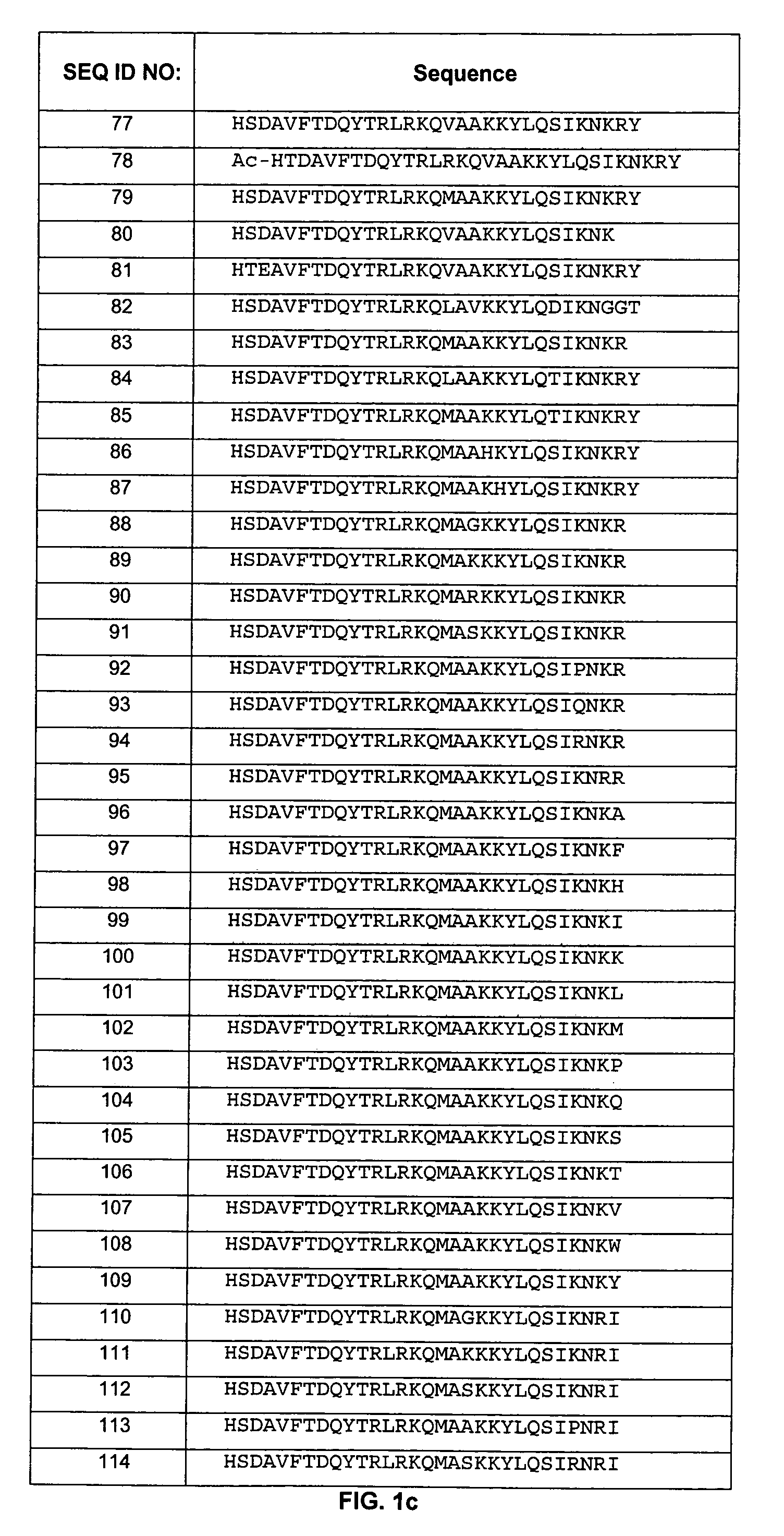Pituitary adenylate cyclase activating peptide (PACAP) receptor (VPAC2) agonist peptide
a technology of adenylate cyclase and adenylate cyclase, which is applied in the field of newly identified polypeptides, can solve the problems of gastrointestinal side effects reported in the literature, weight gain, limitations of sfus, etc., and achieves stable formulation, reduced blood glucose, and greater potency
- Summary
- Abstract
- Description
- Claims
- Application Information
AI Technical Summary
Benefits of technology
Problems solved by technology
Method used
Image
Examples
example 1
Peptide Synthesis Methodology
[0193]The polypeptides of the present invention were designed to improve stability and prolong half-life of these peptides. Specifically, the non-mutated form of these peptides (see, e.g., WO 01 / 23420, incorporated herein in its entirety) demonstrated N-terminal hydrolysis, deamidation, as well as dimerization and trimerization in aqueous and non-aqueous environments. To improve stability and minimize hydrolysis, deamidation, and dimerization / trimerization, the asparagine residues (positions 9 and 28) were mutated to glutamine residues. In addition, valine at position 17, alanine at position 19, lysine at position 29, arginine at position 30, and tyrosine at position 31 were also mutated. Furthermore, as described below, the polypeptides of the present invention were also PEGylated to prolong half-life.
[0194]The following general procedure was followed to synthesize some of the polypeptides of the invention:
[0195]Peptide synthesis was carried out by the ...
example 2
[0196]The half-life of a peptide in vivo may be increased through attachment of a polyethylene glycol (PEG) moiety to the peptide thereby reducing clearance of the peptide by the kidney and decreasing protease degradation of the peptide. The use of a VPAC2 receptor agonist peptide is severely limited by its very short half-life in vivo; however, attachment of a PEG moiety to the peptide (PEGylation) prolonged the half-life of the peptide sufficiently to allow for once / day to once / week treatment.
[0197]PEGylation may be performed by any method known to those skilled in the art. However, in this example, PEGylation was performed by introducing a unique cysteine mutation into the peptide followed by PEGylating the cysteine via a stable thioether linkage between the sulfhydryl of the peptide and maleimide group of the methoxy-PEG-maleimide reagent (Nektar (Inhale / Shearwater), San Carlos, Calif.). It is preferable to introduce the unique cysteine at the C-terminus of the...
example 3
Peptide Cloning
[0199]To express these peptides recombinantly, the DNA sequence encoding a peptide was cloned C-terminal to glutathione S-transferase (GST) with a single Factor Xa recognition site separating the monomeric peptide and GST. The gene encoding the Factor Xa recognition site fused to DNA sequence of the peptide to be produced was synthesized by hybridizing two overlapping single-stranded DNA fragments (70-90 mers) containing a Bam HI or Xho I restriction enzyme site immediately 5′ to the DNA sequence of the gene to be cloned, followed by DNA synthesis of the opposite strands via the large fragment of DNA polymerase I (Life Technologies, Inc., Gaithersburg, Md.). The DNA sequence chosen for each gene was based on the reverse translation of the designed amino acid sequence of each peptide. In some cases, the gene encoding the peptide was generated by PCR mutagenesis (Picard, et al., Nucleic Acids Res 22:2587-91, 1994; Sambrook, et al., Molecular Cloning: A Laboratory Manual...
PUM
| Property | Measurement | Unit |
|---|---|---|
| pH | aaaaa | aaaaa |
| pH | aaaaa | aaaaa |
| flow rate | aaaaa | aaaaa |
Abstract
Description
Claims
Application Information
 Login to View More
Login to View More - R&D
- Intellectual Property
- Life Sciences
- Materials
- Tech Scout
- Unparalleled Data Quality
- Higher Quality Content
- 60% Fewer Hallucinations
Browse by: Latest US Patents, China's latest patents, Technical Efficacy Thesaurus, Application Domain, Technology Topic, Popular Technical Reports.
© 2025 PatSnap. All rights reserved.Legal|Privacy policy|Modern Slavery Act Transparency Statement|Sitemap|About US| Contact US: help@patsnap.com



